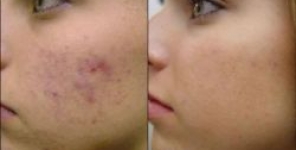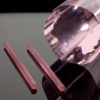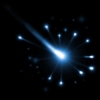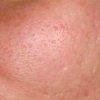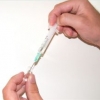Trattamento di successo per le teleangectasie del viso tramite l'utilizzo di un laser a microimpulso 1,064-nm di granato di ittrio e alluminio dopato al neodimio
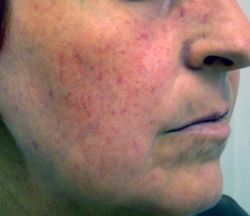 Valutare la sicurezza e l'efficacia di un laser al microsecondo 1,064-nm di granato di ittrio e alluminio dopato al neodimio (Nd:YAG), per il trattamento delle teleangectasie del viso.
Valutare la sicurezza e l'efficacia di un laser al microsecondo 1,064-nm di granato di ittrio e alluminio dopato al neodimio (Nd:YAG), per il trattamento delle teleangectasie del viso.
Metodi
I soggetti tra i 35 e i 70 anni di età, con tipi di pelle da I a III secondo Fitzpatrick e teleangectasie del viso sono stati sottoposti a due trattamenti con laser a microimpulso (0.65 ms) 1,064-nm Nd:YAG. I trattamenti sono stati intervallati da periodi di 30 giorni, con una valutazione finale dopo 60 giorni dal secondo trattamento. La valutazione ha incluso la fotografia digitale e una stima del grado di miglioramento su una scala da 1 a 5 da parte del soggetto e di un investigatore non coinvolto nel trattamento.
Risultati
Venti soggetti (18 donne, due uomini) con tipo di pelle Fitzpatrick II e III hanno completato lo studio. L'investigatore non trattante ha valutato la risposta clinica obiettiva come clearance totale (scomparsa 100%) per il 10% dei soggetti (n = 2), clearance significativa (scomparsa ≥50%) nel 75% (n = 15), e una lieve scomparsa (tra 0-49%) nel 15% (n = 3). Nessuno dei soggetti è stato valutato per aver avuto un peggioramento o per non aver avuto alcuna clearance. Riguardo il miglioramento personale riportato dai soggetti, l'80% (n = 16) ha riferito di una significativa scomparsa, mentre il resto ha riportato una grado di scomparsa lieve. Non sono stati riportati eventi avversi.
Conclusione
Il laser Nd:YAG a microimpulso 1,064-nm ha trattato con successo le teleangectasie del viso con un alto grado di soddisfazione da parte del paziente, un minimo disagio, e senza effetti collaterali.
Storia della pubblicazione:
Titolo: Successful Treatment of Facial Telangiectasias Using a Micropulse 1,064-nm Neodymium-Doped Yttrium Aluminum Garnet Laser
Rivista: Dermatologic Surgery. doi: 10.1111/dsu.12185
Autori: Amy E. Rose, David J. Goldberg
Affiliazioni: Ronald O. Perelman Department of Dermatology, New York University School of Medicine, New York, New York
Department of Dermatology, Mount Sinai School of Medicine, New York, New York
Skin Laser & Surgery Specialists of New York and New Jersey, New York, New York
Abstract:
Objectives
To evaluate the safety and efficacy of a microsecond 1,064-nm neodymium-doped yttrium aluminum garnet (Nd:YAG) laser for the treatment of facial telangiectasias.
Methods
Subjects ages 35–70 with Fitzpatrick skin types I to III and facial telangiectasias underwent two treatments with a micropulse (0.65 ms) 1,064-nm Nd:YAG laser. Treatments were spaced 30 days apart, with a final evaluation 60 days after the second treatment. Evaluation included digital photography and an assessment of the degree of improvement on a scale from 1 to 5 by the subject and a nontreating investigator.
Results
Twenty subjects (18 women, two men) with Fitzpatrick skin type II and III completed the study. The nontreating investigator rated the objective clinical response as total clearance (100% clear) in 10% (n = 2) of subjects, significant clearance (≥50% clear) in 75% (n = 15), and some clearance (0–49% clear) in 15% (n = 3). None of the subjects was rated as having no clearance or worsening. In terms of subjective clearance reported by subjects, 80% (n = 16) reported significant clearance, with the remainder reporting some clearance. No adverse events were reported.
Conclusion
The micropulse 1,064-nm Nd:YAG successfully treated facial telangiectasias with a high degree of patient satisfaction, minimal discomfort, and no adverse events.
